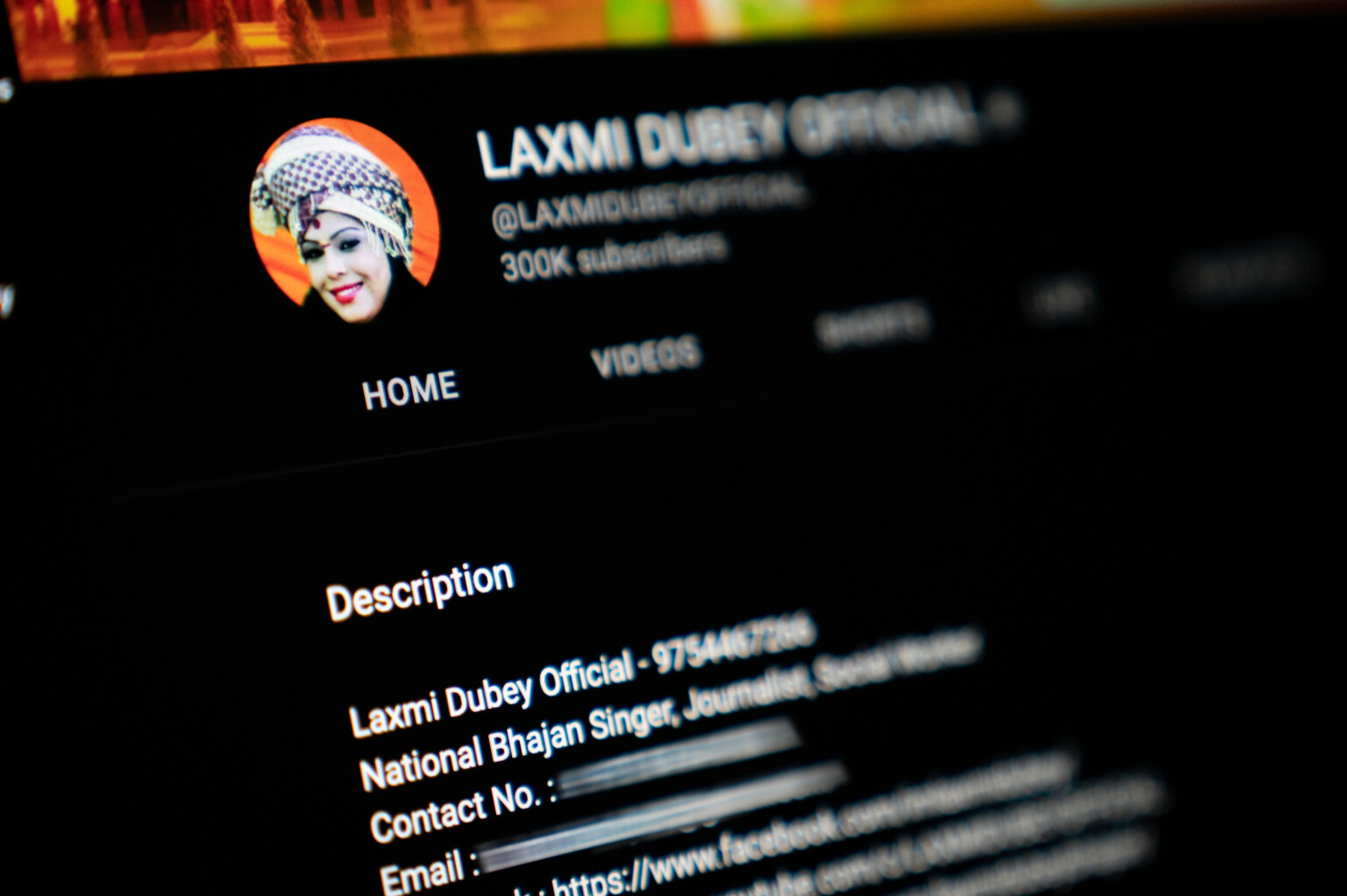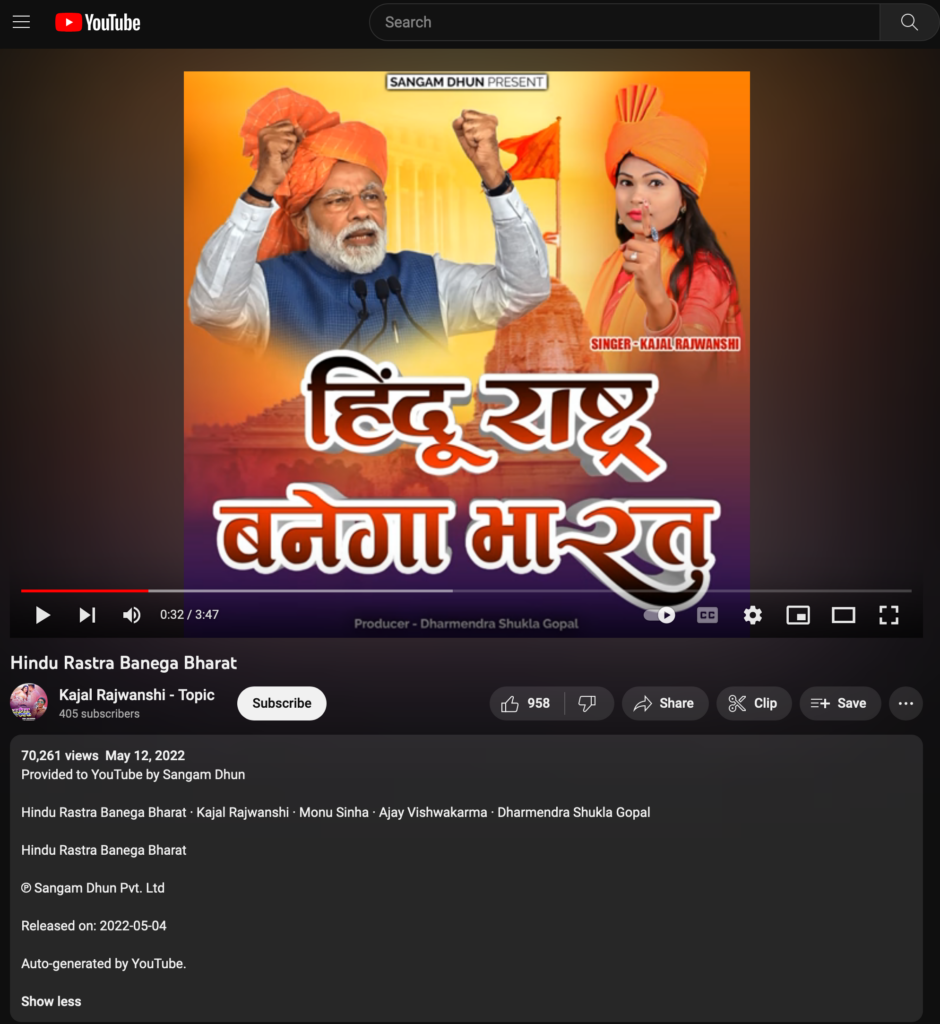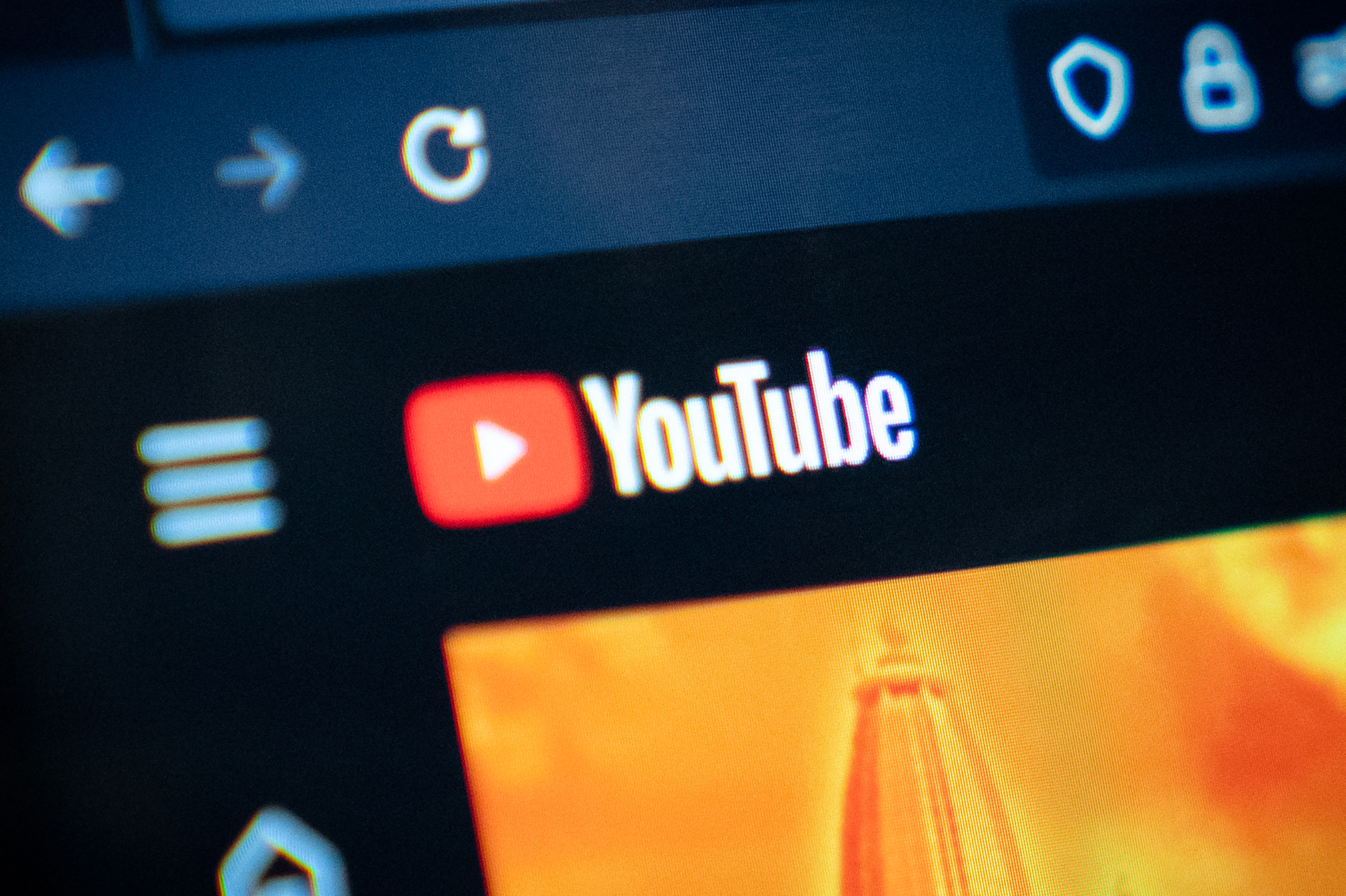Sign up for The Media Today, CJR’s daily newsletter.
Editor’s note: This article has been updated to reflect YouTube’s actions upon reviewing the entire dataset that was part of the Tow Center’s investigation.
In April 2022, a rally in the Indian town of Karauli, Rajasthan, turned violent when anti-Muslim songs were played during Hindu New Year celebrations. The town witnessed the worst communal violence since independence, reported Indian news publication Scroll. One of the songs played had lyrics in Hindi: “The day Hindus wake up, those who wear skull caps will bow down and say victory to lord Ram. The day our blood boils, we will show you your place. We will not speak, only our swords will.”
The song is an example of a musical genre that comes under the banner “Hindutva Pop.” These songs often contain violent lyrics with Auto-Tuned vocals set to catchy upbeat rhythms. As minority communities in India witness a wave of religious hate crimes under Prime Minister Narendra Modi’s tenure, Hindutva pop can be used to inflame the tension.
Five months after the violence in Karauli, a procession of young Hindu men carrying saffron-colored flags gathered outside a mosque in Karnataka, India. They were celebrating Ganesh Chaturthi, a festival that marks the birth of the deity Ganesh. They danced to the music blasting from a makeshift DJ cart, including a Hindutva pop song whose lyrics ran, “We will bathe this land in blood; we will show you your place.”
Both of these songs are available on multiple channels on YouTube and have garnered hundreds of thousands of views. An analysis by the Tow Center spanned 100 songs across 40 channels on YouTube that were manually analyzed to check for hateful content.
Twenty-six of the forty channels in our dataset participate in the YouTube Partner Program, which provides access to monetization features including allowing channels to place ads on their videos. Ad revenue is split between YouTube and the video publisher; popularity is an incentive for both.
Following questions from the Tow Center, YouTube reviewed our dataset and responded via email: “Our review process is still underway, but we can confirm that we found 34 videos to be in violation of the Advertiser-Friendly Guidelines, and have subsequently removed their ability to monetize on YouTube.”
Songs of hate
YouTube is rife with videos of men and women dressed in saffron — a color appropriated by the Hindu right-wing — singing songs that target minority communities, primarily Muslims. The songs advocate the establishment of India as a Hindu nation, the genocide of Muslims, religious war, and construction of temples after demolishing mosques. Their lyrics state those without these beliefs are “traitors,” “anti-nationals,” or “jihadis.”
Hindutva channels like these remain on YouTube despite the platform’s policies against hateful content that disallow “promoting violence or hatred against individuals or groups” based on attributes including religion, race, ethnicity, and nationality. In 2019, YouTube extended its hate speech policy to explicitly include the prohibition of “videos alleging that a group is superior in order to justify discrimination, segregation or exclusion” based on several qualities including religion.
In the name of God and nationalism
Singer Laxmi Dubey’s YouTube channel, Laxmi Dubey Official, has more than 313,000 subscribers. She describes herself as a national bhajan singer; bhajans are devotional songs or hymns praising God.
“Those who cause hindrance in the land of Ram, they will not be left alive” is one of the many warnings in Dubey’s song “Har Ghar Bhagwa Chayega” (“Saffron will be raised in every home”), which has received more than 1.9 million views to date.
As The New York Times reported in 2019, other songs on Dubey’s channel encourage her audience to “perform ceremonies with bullets,” “fight proudly against ungodly religions,” and “cut off the tongues of enemies who talk against Ram.”
Remixes of Dubey’s songs along with the originals receive millions of views across multiple YouTube channels. An upload of “Har Ghar Bhagwa Chayega” to the popular channel Bhakti Mala (Worship Beads), which typically features traditional devotional songs or bhajans, has garnered 3.2 million views, far exceeding the song’s 1.9 million views on Dubey’s official channel.

Laxmi Dubey describes herself as a bhajan (devotional) singer on her verified channel on
YouTube. | Photo credit: Yong Xiong
“Auto-generated” by YouTube
Kajal Rajwanshi is another popular Hindutva pop singer. Rajwanshi doesn’t have an official YouTube artist channel, but her songs are available on a channel auto-generated in her name by the platform.
For artists who don’t already have an official channel, YouTube can dynamically create a channel for the artist and populate it with their songs. Music distributors and artists who participate in the YouTube Partner program can provide their recording and artwork media files along with the recording metadata. YouTube then generates videos for all the songs in an artist’s catalog, combining the audio with the album art to make what the platform refers to as “Art Tracks.” This automated approach allows YouTube to extend its music inventory while making it easy for users to locate an artist’s discography.
Largely, this is a pragmatic strategy that works for both YouTube and up-and-coming artists, but what happens when YouTube’s processes are indiscriminate about the kinds of music it provides this service for?
Our analysis of Hindutva channels found multiple instances where YouTube has auto-generated videos for songs with inflammatory lyrics that violate the platform’s policies. In 2019, singer Varun Bahar released a song titled “Jo Na Bole Jai Shri Ram Bhej Do Usko Kabristan” (“Those who don’t hail Lord Ram, send them to the graveyard”), which contains the lyrics “The traitors hiding at home will be skinned. One who doesn’t hail Lord Ram, their tongues will be slashed. Killing a traitor is not a sin. No jihadi Muslim is of worth.”
This song was removed from YouTube by Janta Musical and Pictures, Bahar’s record label, in 2019 after he and three others, including the label owner, were arrested and charged with promoting racial hatred for the song’s inflammatory lyrics. It reappeared after another music distribution company provided the song to YouTube, and the platform uploaded an auto-generated Art Track version of the song in 2020.
YouTube’s Art Tracks and dynamic channels enable Hindutva singers to reach audiences with minimal effort. For example, the record label Sangam Dhun uploaded the music video of Rajwanshi’s song “Hindu Rashtra Banega Bharat” (“India will become a Hindu nation”) to YouTube in May 2022. At the same time, YouTube generated an Art Track of the song. Combined, the song’s two videos have more than 100,000 views.
Sangam Dhun is owned by Dharmendra Shukla, the national president of a Hindu nationalist organization called Rashtriya Hindu Vahini Sangh, which supported the ruling Bharatiya Janata Party (BJP) ahead of the state elections in Uttar Pradesh.

Screenshot of the Art Track for Kajal Rajwanshi’s “Hindu Rashtra Banega
Bharat,” auto-generated by YouTube, which can be found on an automatically
generated topic channel in her name.
Reappearance of terminated YouTube channels
Singer Sandeep Acharya is a member of the Hindu Yuva Vahini, a right-wing Hindu youth organization founded by BJP leader and Uttar Pradesh Chief Minister Yogi Adityanath in 2002.
In 2022, YouTube terminated Acharya’s Rudra Music account due to “multiple or severe violations of the platform’s policy prohibiting hate speech.” However, he continues to build an audience through his new channel, Acharya Music World, regularly posting videos of new songs.
In January 2023, in an interview about Hindutva music with German news network DW, Acharya said, “According to their [YouTube’s] terms and conditions, it is hate speech. A lot of my channels are suspended. But our reach is very high on the platform, so once a channel is taken down, I make another.”
YouTube has an official policy that prohibits users from creating any other channel upon termination, but Acharya has been running the new account unabated since May 2021. As of March 2023, Acharya Music World has nearly 11,800 subscribers with almost 1.5 million views.
Several songs on Acharya’s channel have violent lyrics. “We will butcher those who butcher cows,” he sings in the song “Gai Hamari Mata Hai” (“The Cow Is Our Mother”), which was recently removed from the channel. “We are Hindus and India is ours … there is no place for love jihad in India,” he sings in another that is still available on YouTube.
Acharya’s music is shared by other channels that upload Hindutva songs — Sandeep Acharya Fan (15,500 subscribers as of March 2023) — Prarambh Music (8,300 subscribers), and Chal Mere Bhai (16,800 subscribers). While these individual channels do not have large subscriber bases, some of their videos of Acharya’s songs have garnered millions of views.
Updated on March 13, 2023 to reflect YouTube’s actions after the platform company reviewed the entire dataset that was part of the Tow Center’s investigation: YouTube terminated Acharya Music World for circumventing their Terms of Service by creating another account after Rudra Music was terminated. Nine videos have also been removed from the Sandeep Acharya Fan channel for posting content from creators who are either restricted or whose accounts have been terminated.
Remixes
Hindutva pop can be further boosted through remixes on copycat channels — even when the original songs are removed. For example, while the original version of “Agar Chua Mandir” (“If you dare touch our temple”) — source of the lyric “We will bathe this land in blood, we will show you your place” — is no longer available, several channels carry remixed or cover versions of the track.
A video of ex-BJP legislator T Raja Singh singing the song to a crowd of supporters was uploaded by Singh’s channel Shree Ram Channel Telangana in April 2022. It has 81,000 views to date.
A remixed version of the song uploaded in 2020 has 1.2 million views from a channel called DJ ANUJ. Other remixed versions have 267,301 views from Dj Shree Ramleela Kusumba and 235,514 views from Punekarwala Unreleased as of March 6, 2023.
Failure to moderate
The video of a song by Kanhiya Mittal, “Jo Ram ko laye hai hum unko layenge” (“We will bring to power those who brought back Ram”), has received more than 17 million views on his official YouTube channel. In the song lyrics, Mittal encourages the “saffronization” of Uttar Pradesh by “taking back mosques” that the Hindu right-wing consider to be ancient temples.
The song refers to the BJP’s successful campaign to construct a temple dedicated to Ram in Uttar Pradesh at the site of a 16th-century mosque, which was demolished by a Hindu mob in 1992. Another of his songs contains the threat: “If you touch (our) temples, you will not be spared.”
Mittal has built a fanbase so large that other singers release cover versions of his tracks. A 2022 YouTube video of a young boy performing “Jo Ram ko laye hai hum unko layenge” has received more than 1 million views.
YouTube warns its users about its three-strike rule that governs posted content. “If your content violates our Community Guidelines, your channel will get a strike,” the platform says. One violation means the channel will be frozen for one week; a further violation freezes the account for two weeks; and a third means the channel is permanently removed from YouTube. Yet at least 16 channels in our dataset that have made at least three violations continue to be available, despite reaching the platform’s threshold for permanent suspension.
One common explanation for YouTube’s failure to enforce its policies remains language barriers. Over the years, YouTube has invested in improving its algorithms and moderating content in English, after coming under intense scrutiny for playing a role in leading users down conspiracy rabbit holes about the 2018 Parkland school shootings and radicalizing the perpetrator of the terrorist attack on two mosques in New Zealand in 2019. Meanwhile, content in other languages doesn’t get the same treatment.
In her 2018 report, “Alternative Influence: Broadcasting the Reactionary Right on YouTube,” researcher Rebecca Lewis wrote that YouTube and its parent company, Alphabet, “have allowed racist, misogynist, and harassing content to remain online — and in many cases, to generate advertising revenue — as long as it does not explicitly include slurs.”
But when it comes to India, YouTube’s algorithm often fails to spot common slurs in Hindi.
YouTube reaches more than two billion people worldwide monthly, with its biggest user base in India. But India’s ad market is much smaller than that of the United States, which may help explain YouTube’s apparent unwillingness to fully enforce its policies in India, said Kayla Gogarty, a deputy research director at Media Matters, a US-based nonprofit media watchdog organization.
Hindutva pop has been used to promote religious violence. Despite previous reporting and investigations, this content that violates YouTube’s policies continues to not only find a home on the platform, but also to monetize the content.
Methodology
The Tow Center collected examples of Hindu supremacist music using a mix of manual search, YouTube advanced search, and extracted recommendations and playlists by scraping “related videos” using YouTube’s public API.
The songs were analyzed manually to inspect the lyrics, titles, and descriptions. We used the final dataset of 100 songs from across 40 channels for our analysis. We classified the songs as hateful based on YouTube’s policies and the larger sociopolitical context of the words and phrases used.
Our dataset is not exhaustive, and the ecosystem of Hindutva pop is substantially larger. If you are interested in seeing the more granular dataset, please get in touch here.
This investigation was produced in the Reporting II — Data Journalism class at Columbia Journalism School (Fall 2022), taught by Dhrumil Mehta and Denise Ajiri.
Clarification: In response to a request from YouTube, we have changed the headline on this article. The previous version of the headline read, “YouTube allows Hindutva pop videos that violate its hate policies, auto-generates more.”
Has America ever needed a media defender more than now? Help us by joining CJR today.





